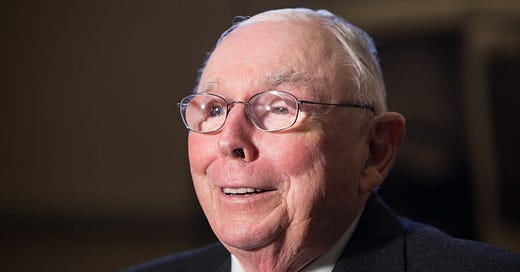The 3 Mental Models That Top Investors Use (But Rarely Talk About)
🧠 Why some investors see the game differently - and how you can too...
Hi, Investor 👋
I’m Jimmy, and welcome to another edition of our newsletter. This week, we’re diving into the thinking tools that separate good investors from great ones: mental models.
They’re not formulas or hacks - they’re how top investors like Buffett, Marks, and Dalio think. And today, you’ll learn how to apply them too.
In case you missed it, here are some recent insights:
The Platform Playbook: Why They Dominate +32% of My Portfolio
Monthly Portfolio Update #7 | +37,05% CAGR Through High-Quality Investing
Subscribe now and never miss a single report:
Most people think investing is about stock picking, valuation models, or macro predictions.
But some of the best investors in the world - from Buffett to Howard Marks to Peter Lynch - rely on something else entirely:
Mental models.
Mental models aren’t formulas. They’re ways of seeing - tools that help you process complexity, make decisions under uncertainty, and avoid the traps that ruin performance.
In this edition, I’ll walk you through 3 powerful mental models that top investors use again and again - often without explicitly naming them.
These models are behavioral, strategic, and designed to give you clarity when others are confused…
Found this content valuable? Share it with your network! Help others discover these insights by sharing the newsletter. Your support makes all the difference!
1. Inversion: Start by Asking What Can Go Wrong
Charlie Munger, Warren Buffett’s long-time partner, famously said:
“All I want to know is where I’m going to die, so I’ll never go there.”
That’s inversion thinking in a single sentence.
Most people approach investing by asking (WRONG WAY):
“What makes this stock a winner?”
“What are the upside drivers?”
But inversion flips the question (RIGHT WAY):
“What would make this stock a disaster?”
“How could this go wrong?”
It’s simple, but powerful…
We’re wired to seek gains. But over time, avoiding catastrophic mistakes matters more. The market doesn’t reward brilliance as often as it punishes blind spots.
Example:
Say you're excited about a high-growth software company. Everyone's bullish. Great product. Rapid revenue expansion.
Instead of joining the hype, you invert:
What if user growth slows?
What if they can’t raise capital again?
What if a competitor undercuts their price model?
By surfacing risks early, you’re not becoming negative - you’re becoming resilient.
📌 How to apply it:
Before every investment, write down three things that could go wrong. If you can’t do it, you're not seeing clearly - you're just hopeful.
This one’s solid - but the real game changers are the next two. Let’s get to them...
Keep reading with a 7-day free trial
Subscribe to Jimmy's Journal to keep reading this post and get 7 days of free access to the full post archives.





